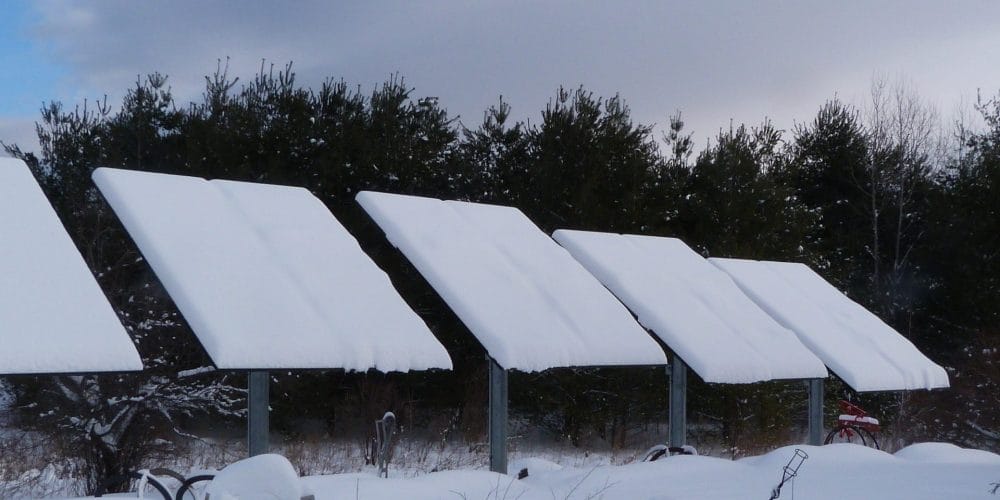A daily technical, financial, and political review/analysis of important green energy news.
Solar panels keep buildings cool – Using thermal imaging, researchers determined that during the day, a building’s ceiling was 5 degrees Fahrenheit cooler under solar panels than under an exposed roof. At night, the panels help hold heat in, reducing heating costs in the winter. For the building researchers analyzed, the panels reduced the amount of heat reaching the roof by about 38 percent. His team determined that the amount saved on cooling the building amounted to getting a 5 percent discount on the solar panels’ price, over the panels’ lifetime. Or to put it another way, savings in cooling costs amounted to selling 5 percent more solar energy to the grid than the panels are actually producing— for the building researchers studied. It’s an old study, but someone posted it on reddit and it made me happy to see it coming back around. As a commercial solar salesperson, you never get the chance to really inject this financial benefit into a pro-forma, its too wishy washy. All my numbers come from UL, the IRS and NREL. 5% discount/more solar means projects that pay back in 5-10 years, takes off 3 to 6 months from system’s the payback period.

PG&E hits California’s 2020 renewable energy goal – 78.8% of PG&E’s total electric power mix is from GHG-free sources including nuclear, large hydro, and renewable sources of energy. The renewable portion of that is 33% – California’s 2020 goal. Nationally, we’re at about 37% electricity from GHG-free sources. Amazing work PG&E.
Wuxi Suntech providing half-cut cell modules to European customers – High-performance multicrystalline half-cut cell modules to European customers, offering power classes of 295/290W. Module performance was also said to have been improved because of cell current losses by 50% with half-cut cell technology and cell temperature operation dropping by 20~25℃ compared to conventional modules, according to the company. Solar cells in solar panels might be getting permanently smaller, which makes me wonder if companies like Solaria – doing shingle cells covering 99%+ of the solar panel face – are the end game. Is there a way to make a single sheet of silicon that is 6ft x 3ft?
Israel aims to eliminate use of coal, gasoline and diesel by 2030 – The aim for 2030 is to alter that to 83% natural gas and 17% renewable energy, with “zero pollutants,” Steinitz said. Leaving those fuels is nice, shifting to gas is a bit cleaner. What’s it going to be in the long game though? Can’t burn gas forever.
Wood helps secure subsea wires – I watch the wind industry and subsea cables because subsea cable advancements allow us to move electricity internationally. Moving electricity internationally means we get a fairly consistent amount of solar power as the sun circles the planet. It is an inevitability (just like the macrogrid).
Its almost as if there is some sort of pattern, some event that is occurring over and over – driving a change that cannot be stopped. Something…whatever it is.
It ain't stoppinghttps://t.co/3BumQ65c6B pic.twitter.com/ZnYOi3y7R0
— Commercial Solar Guy (@SolarInMASS) February 27, 2018
Regarding the below tweet – we’re going to get more energy smart. We’re going to keep adding technological IQ to hardware and algorithms running underneath to automate certain activities. We’ll build equations that watch generation, consumption, sources, and then consider your plans for the day – and then they’ll decide how to move that current. Just getting smarter, will make us use 20% less electricity.
If the world’s drivers plug in their electric vehicles right after work, it could undo many of the environmental benefits expected from fewer cars running on gasoline and diesel https://t.co/ebWp8uDzHT pic.twitter.com/1w9Om88OPQ
— Bloomberg Energy (@BloombergNRG) February 26, 2018
Feature image comes from the Department of Energy. Solar panels in winter. Photo by Paul Bouchard.
If you’re interested in residential several quotes from a local residential solar contract, Understandsolar.com will connect you with that local talent so you can start a proper bidding war for your roof.
